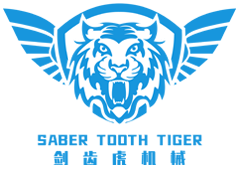19
2025
-
09
A Comprehensive Guide to CNC Busbar Cutting Techniques: Mastering Precision and Efficiency
A Comprehensive Guide to CNC Busbar Cutting Techniques Table of Contents 1. Introduction to CNC Busbar Cutting 2. What is CNC Busbar Cutting? 3. Benefits of CNC Busbar Cutting Techniques 4. Different Techniques for CNC Busbar Cutting 4.1 Laser Cutting 4.2 Plasma Cutting 4.3 Water Jet Cutting 4.4 Shearing 5. Choo
A Comprehensive Guide to CNC Busbar Cutting Techniques
Table of Contents
- 1. Introduction to CNC Busbar Cutting
- 2. What is CNC Busbar Cutting?
- 3. Benefits of CNC Busbar Cutting Techniques
- 4. Different Techniques for CNC Busbar Cutting
- 5. Choosing the Right Technique for Your Needs
- 6. Best Practices for CNC Busbar Cutting
- 7. Common Challenges in CNC Busbar Cutting
- 8. Future Trends in CNC Busbar Cutting Technologies
- 9. Frequently Asked Questions
- 10. Conclusion
1. Introduction to CNC Busbar Cutting
The advancement of Computer Numerical Control (CNC) technology has revolutionized the manufacturing industry, particularly in the field of busbar cutting. Busbars serve as crucial components in electrical systems, allowing the efficient distribution of electrical power. This comprehensive guide delves into the intricacies of CNC busbar cutting techniques, equipping professionals with the knowledge to enhance their operational efficiency and product quality.
2. What is CNC Busbar Cutting?
CNC busbar cutting involves using precision machinery to cut busbars—typically made of copper or aluminum—into specific shapes and sizes based on design specifications. The CNC technology automates the cutting process, ensuring high accuracy, repeatability, and reduced material waste. This process is essential in the production of electrical components, where precision is paramount.
3. Benefits of CNC Busbar Cutting Techniques
Implementing CNC busbar cutting techniques offers a multitude of advantages, including:
3.1 Enhanced Precision
CNC machines provide unparalleled precision, allowing for intricate designs and exact measurements that manual cutting methods cannot achieve.
3.2 Increased Efficiency
Automation reduces the time required for cutting, enabling faster production rates and lower labor costs.
3.3 Consistency in Quality
CNC technology ensures that each cut is uniform, resulting in consistent quality across all produced busbars.
3.4 Reduced Material Waste
By optimizing cutting paths and techniques, CNC busbar cutting minimizes material waste, contributing to more sustainable manufacturing practices.
3.5 Versatility
CNC machines can handle various materials and cutting techniques, making them adaptable for different production needs.
4. Different Techniques for CNC Busbar Cutting
Numerous cutting techniques are employed in CNC busbar manufacturing, each with unique strengths and applications.
4.1 Laser Cutting
Laser cutting is one of the most popular methods for CNC busbar cutting. It uses a high-powered laser beam to precisely cut through materials. This technique is particularly effective for complex and detailed designs.
Advantages of Laser Cutting
- **High precision**: Laser cutting can achieve tolerances as tight as ±0.01 mm.
- **Clean edges**: The process produces minimal burrs, reducing the need for additional finishing.
- **Non-contact cutting**: Reduces the risk of material distortion.
4.2 Plasma Cutting
Plasma cutting utilizes a high-velocity jet of ionized gas to melt and expel material from the workpiece. It's suitable for thicker materials where traditional laser cutting may not be efficient.
Advantages of Plasma Cutting
- **Speed**: Faster than laser cutting for thicker materials.
- **Cost-effective**: Generally lower operational costs for certain applications.
- **Versatile**: Can cut through various conductive metals.
4.3 Water Jet Cutting
Water jet cutting employs a high-pressure stream of water mixed with abrasive particles to cut through materials. This technique is ideal for materials sensitive to heat, such as certain plastics.
Advantages of Water Jet Cutting
- **No heat-affected zone**: Prevents thermal distortion and damage to heat-sensitive materials.
- **Eco-friendly**: Utilizes water and reduces hazardous waste.
- **Precision**: Offers high-precision cuts with smooth edges.
4.4 Shearing
Shearing is a mechanical process where a straight blade cuts through metal sheets. It is commonly used for producing straight cuts and is efficient for high-volume production.
Advantages of Shearing
- **Speed**: Fast operation suitable for mass production.
- **Low cost**: Economical for simple cuts without intricate designs.
- **Simple setup**: Easier setup compared to more complex CNC systems.
5. Choosing the Right Technique for Your Needs
Selecting the appropriate CNC busbar cutting technique hinges on several factors, including material type, desired precision, production volume, and budget.
5.1 Material Considerations
Different materials may respond better to specific cutting methods. For example, **aluminum** may be best suited for laser cutting due to its thermal conductivity, while **thicker copper** may require plasma cutting.
5.2 Volume of Production
For high-volume operations, more efficient methods like shearing or plasma cutting may be preferable to reduce operational costs and time.
5.3 Precision Requirements
High-precision applications, such as those in electrical systems, may necessitate laser or water jet cutting to ensure the required tolerances are met.
6. Best Practices for CNC Busbar Cutting
To maximize the efficiency and quality of CNC busbar cutting, consider implementing the following best practices:
6.1 Regular Maintenance of Equipment
Keeping CNC machines well-maintained ensures optimal performance and longevity. Regularly check and calibrate equipment to prevent errors.
6.2 Training Operators
Invest in training for operators to ensure they understand the machines' capabilities and limitations, as well as the best practices for each cutting technique.
6.3 Utilizing Advanced Software
Employ advanced CAD/CAM software for designing cutting paths and optimizing the production process to minimize waste and maximize efficiency.
6.4 Quality Control Procedures
Implement stringent quality control measures to monitor output, ensuring every piece meets the specified requirements.
7. Common Challenges in CNC Busbar Cutting
While CNC busbar cutting offers numerous benefits, it is not without its challenges.
7.1 Material Distortion
Thermal cutting methods can lead to material distortion. Using techniques like water jet cutting can mitigate this issue.
7.2 Tool Wear
Cutting tools can wear down quickly, especially with harder materials. Regularly monitor tool condition and replace them as necessary to maintain cutting quality.
7.3 Programming Errors
Errors in programming can lead to costly mistakes. Employing simulation software can help identify issues before actual production begins.
8. Future Trends in CNC Busbar Cutting Technologies
The CNC busbar cutting industry is continuously evolving, with trends shaping its future:
8.1 Automation and Smart Technologies
Integration of smart technologies, including IoT and AI, will enhance automation, allowing for real-time monitoring and predictive maintenance of CNC machines.
8.2 Increased Use of Hybrid Cutting Systems
Combining different cutting techniques, such as laser and plasma cutting, will enable manufacturers to take advantage of the strengths of each method.
8.3 Sustainability Initiatives
As environmental concerns rise, manufacturers are increasingly focusing on sustainable practices, such as reducing energy consumption and waste during the cutting process.
9. Frequently Asked Questions
9.1 What materials can be cut using CNC busbar cutting techniques?
CNC busbar cutting techniques can efficiently cut materials like copper, aluminum, and other conductive metals commonly used in electrical applications.
9.2 How does CNC busbar cutting differ from traditional cutting methods?
CNC busbar cutting automates the process, providing higher precision, repeatability, and reduced waste compared to traditional manual cutting methods.
9.3 What is the most efficient CNC busbar cutting technique for thick materials?
Plasma cutting is generally the most efficient technique for cutting thicker materials due to its speed and effectiveness.
9.4 Can CNC busbar cutting be used for intricate designs?
Yes, techniques like laser cutting and water jet cutting are particularly suited for intricate designs and complex shapes.
9.5 What are the typical costs associated with CNC busbar cutting?
Costs can vary based on the cutting technique, materials used, and production volume. It's essential to analyze these factors to estimate overall expenses.
10. Conclusion
CNC busbar cutting techniques represent a significant advancement in manufacturing, offering unparalleled precision, efficiency, and versatility. By understanding the various cutting methods available, their benefits, and best practices, manufacturers can optimize their production processes and enhance product quality. As technology continues to evolve, staying informed about the latest trends will be crucial for maintaining a competitive edge in the ever-changing landscape of manufacturing. Embracing these cutting-edge techniques will undoubtedly lead to improved operational outcomes and sustainable practices in the industry.
Related news





